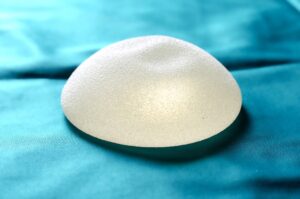 When choosing a breast implant size, several factors are considered. The primary factors are the goals of the patient. Patients have frequently done their own research prior to their in-person consultation, and have a preconceived idea of the size of breast implants desired. In many cases, patients have gotten advice from friends regarding the size of implants. A preconceived idea of desired breast implant size is balanced by an in-person consultation with a qualified plastic surgeon. It is important to understand that there is no substitute for an in-person consultation and an in-person physical exam. Virtual consultations (on a computer and not in person) can help provide some guidance, but an “in-person exam” is important prior to the plastic surgeon giving final recommendations.
When choosing a breast implant size, several factors are considered. The primary factors are the goals of the patient. Patients have frequently done their own research prior to their in-person consultation, and have a preconceived idea of the size of breast implants desired. In many cases, patients have gotten advice from friends regarding the size of implants. A preconceived idea of desired breast implant size is balanced by an in-person consultation with a qualified plastic surgeon. It is important to understand that there is no substitute for an in-person consultation and an in-person physical exam. Virtual consultations (on a computer and not in person) can help provide some guidance, but an “in-person exam” is important prior to the plastic surgeon giving final recommendations.
Breast augmentation patients frequently ask, “What is the largest breast implant I can get?” Limitations on the maximum size of breast implants can fall into two categories. The first category of limitation is subjective, that is, based on the patient’s personal opinion (desires). The second category of limitation is objective, that is, based on fact, which in this case, is the patient’s existing anatomy.
Subjective criteria would include a self-imposed subjective limitation of desired breast implant size that could mean the patient simply wants the breast size to be in proportion with the rest of the body. Achieving proportion is a realistic and achievable goal for most patients. Many patients request a medium-sized implant that is in proportion to their body. The size of the breast implant to achieve proportion varies widely depending on the size of the patient. A “medium-size” implant for a 6-foot-tall patient would be different from a “medium-size” implant for a 5-foot-tall patient.
Objective criteria would include the specific anatomic characteristics (dimensions) of the patient that would include, but not be limited to, the breast skin envelope (available breast skin) and the chest width (possible breast base width). The amount of skin in the breast (surplus or deficiency) can affect the size of the breast implant that is best suited for an individual patient. If there is a large surplus of skin, then a larger implant can usually be placed. If there is not a large surplus of skin, then the size of the implant placed may be somewhat limited. A second factor is the width of the chest. It is important to understand that as implant volume increases, the diameter of the breast implant also increases. The difference in diameter between a small breast implant and a large breast implant can be as much as three centimeters. A narrow chest wall can limit the size of the breast implant because the implant width is limited. Breast implants are available in a “high profile” design that can be used in patients with a narrow chest diameter. A “high profile” implant will have a narrower width when compared to a “low profile” implant of the same size (volume).
The relatively unique anatomy of every patient will, to some degree, dictate the ideal breast implant size. There are other factors to consider in choosing a breast implant size that are discussed at the in-person consultation. The ideal breast implant size will typically fall in a range of sizes (volumes), and the patient’s goals can help determine the desired size within that range. Breast “sizers,” covered in a previously written blog post, are very helpful to this end. The plastic surgeon helps guide the patient through the pre-operative process to select a breast implant size that meets the patient’s goals and at the same time safely fits the patient’s anatomy.
Our board-certified plastic surgeon, Dr. Stephen Herring, has many years of experience customizing breast augmentation treatments for patients in Fayetteville and from out-of-town. If you would like to learn more about breast augmentation or to schedule a consultation, please feel free to contact us.
Previous Post Next Post